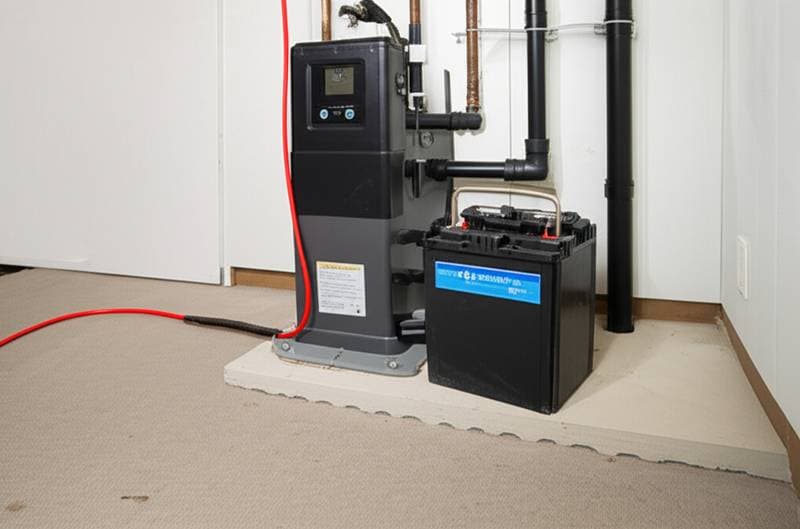2025 Kitchen Renovation: Comparing $15,000 and $50,000 Budgets
Homeownership brings unique opportunities for personalization, and few spaces offer greater potential for improvement than the kitchen. Renovation costs often surprise new owners, prompting questions about realistic outcomes for different budgets. Careful planning allows both modest and generous investments to yield functional, attractive results.
This guide details achievable elements in a $15,000 kitchen renovation versus a $50,000 project. Readers gain insights into essential investments, areas for savings, and decision-making strategies aligned with specific needs.
Elements of a $15,000 Kitchen Renovation
A $15,000 budget emphasizes targeted updates that refresh the space while preserving the existing layout. This approach suits homeowners satisfied with their kitchen's footprint who seek enhanced aesthetics and usability without extensive disruption.
Primary Investment Areas
-
Cabinet Refinishing Options
Professionals can reface cabinets by installing new doors, drawer fronts, and veneer over the existing boxes, typically costing $3,000 to $6,000. This method updates the style significantly at a lower expense than full replacement.
Alternatively, painting cabinets with durable, semi-gloss enamel paint costs around $1,500 to $3,000, including new hardware like brushed nickel pulls for a contemporary finish. -
Countertop Updates
Laminate surfaces in patterns resembling wood or stone range from $1,000 to $2,500 installed, providing durability and variety.
Butcher block offers a warm, natural appearance for $800 to $1,500, while solid-surface options that imitate quartz cost $2,000 to $3,000 and resist stains effectively. -
Backsplash and Fixture Enhancements
Subway tile installations, priced at $500 to $1,200, deliver timeless appeal and easy maintenance.
Self-adhesive tiles serve as a budget alternative at $200 to $500, ideal for quick DIY application.
New faucets and hardware, such as matte black or chrome finishes, add cohesion for $300 to $600. -
Lighting Adjustments
Replace overhead fixtures with recessed LEDs for $400 to $800, improving energy use and illumination.
Install under-cabinet strips at $200 to $500 to highlight workspaces and create ambiance during evening meal preparation. -
Appliance Replacements
Upgrade a refrigerator or range with energy-star-rated models costing $1,000 to $2,000 each, prioritizing features like adjustable shelves or convection ovens for efficiency.
Areas to Defer
Avoid structural modifications, such as wall removals that require permits and engineering, which exceed this budget. Skip bespoke cabinetry or premium imports, and opt out of high-end flooring like marble, reserving those for future phases.
DIY Integration
Homeowners with basic skills can handle painting, hardware swaps, and backsplash installation, potentially saving $2,000 to $4,000. Consult online guides for surface preparation, such as sanding cabinets thoroughly and applying primer coats, to ensure professional-grade outcomes.
Budget Comparison Overview
| Feature | $15,000 Renovation | $50,000 Renovation |
|---|---|---|
| Cabinets | Reface or paint existing | Install custom or semi-custom units |
| Countertops | Laminate or butcher block | Quartz, granite, or marble slabs |
| Appliances | Update one or two key items | Complete suite with smart features |
| Flooring | Vinyl plank or laminate | Porcelain tile or engineered hardwood |
| Lighting | Fixture replacements and LEDs | Comprehensive redesign with smart controls |
| Layout | Retain current configuration | Reconfigure islands, add pantries |
| Professional Involvement | Selective hires or self-managed | Dedicated contractor and designer team |
Effective Allocation Strategies
Emphasize Practicality in Design Choices
Assess daily routines before selecting elements; frequent cooks benefit from ample counter space and pull-out drawers, while occasional users prioritize easy-clean surfaces. Durable selections, such as stainless steel appliances, outperform decorative ones in longevity.
Balance Premium and Economical Choices
Pair basic laminate counters with a $1,000 designer backsplash to draw attention upward. Select stock cabinets and customize with $200 crown molding for an upscale illusion without proportional cost.
Maximize Existing Assets
Retain solid cabinet frames by updating only visible components, saving up to 70% compared to demolition. Layer area rugs over serviceable vinyl floors for texture and warmth at minimal expense.
Secure Competitive Bids
Request detailed proposals from at least three vendors, specifying inclusions like demolition debris removal. Verify licensing, review past projects, and confirm timelines to avoid delays.
Account for Contingencies
Allocate 10% of the budget, or $1,500 to $5,000, for discoveries like outdated electrical wiring. Schedule inspections early to identify issues proactively.
Achieving Elegance on Limited Funds
Thoughtful selections elevate any renovation's sophistication.
- Neutral Foundations with Vibrant Details: Select white or gray cabinets as a canvas, then incorporate a blue glass tile backsplash for visual interest.
- Open Storage Solutions: Convert wall cabinets to floating shelves using $300 in brackets and wood, fostering an open-concept feel.
- Multi-Layered Illumination: Integrate overhead cans for general light, pendants over islands for focus, and toe-kick LEDs for subtle glow.
- Unified Metallic Accents: Choose brass throughout faucets, cabinet pulls, and sconces to create harmony.
- Precise Material Planning: Use digital tools to measure spaces accurately, ordering exact quantities to minimize waste and returns.
Enhancing Resale and Daily Utility
Renovations influence property value and livability when focused on enduring quality. Energy-efficient appliances reduce utility bills by 20-30%, while neutral tones broaden buyer appeal.
Document changes with before-and-after photos and invoices for tax or sale purposes. Personalize non-structural elements, like colorful drawer organizers, to suit ongoing needs.
Preserving Renovation Quality
Routine care sustains the investment's appearance and performance.
- Apply gentle, pH-neutral cleaners to counters weekly to avoid etching.
- Reapply sealant to grout lines annually, checking for moisture intrusion.
- Lubricate drawer slides quarterly to maintain smooth operation.
- Schedule professional vent cleaning for ranges every six months.
- Address water spots immediately with vinegar solutions on stone surfaces.
These practices prevent minor issues from escalating, extending the renovation's lifespan by years.
Advancing Your Project
With these comparisons, evaluate your kitchen's current state against desired improvements. Cosmetic updates suit functional spaces needing style, while layout overhauls justify higher spending for efficiency gains.
Compile reference images from design platforms, prioritize essentials like storage, and solicit bids from certified professionals. Consult experts for complex elements, building expertise through incremental projects.

